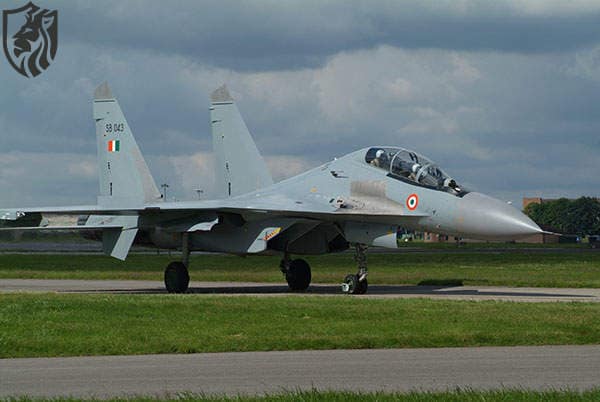
IAF Su-30MKI
India’s Su-30MKI fighter jet fleet is set to undergo a transformative upgrade programme in collaboration with India’s Su-30MKI fighter jet fleet is set to undergo a transformative upgrade program in collaboration with Russia, marking a significant step toward enhancing its combat capabilities.
The program, known as the Super Sukhoi program, aims to overhaul key systems, including the Fly-by-Wire (FBW) system, to address critical flaws. The Indian Air Force (IAF), Hindustan Aeronautics Limited (HAL), and Russian Original Equipment Manufacturers (OEMs) will jointly spearhead this initiative, which includes avionics modernization, electronic warfare suite enhancement, and weapons system upgrades to ensure India’s air superiority in defense strategy.
Russia is taking a significant step toward enhancing its combat capabilities. The program, known as “Super Sukhoi,” focuses on overhauling key systems, especially the Fly-by-Wire (FBW) system, to address critical flaws. The Indian Air Force (IAF), Hindustan Aeronautics Limited (HAL), and Russian Original Equipment Manufacturers (OEMs) will collectively spearhead this initiative.

Addressing the Su-30MKI Fly-By-Wire Challenges
The Su-30MKI was declared ‘unstable,’ and Russia was ‘invited’ to overhaul initiative centers on fixing the FBW system. This electronic flight control mechanism replaces conventional hydraulic controls, enabling pilots to manage the aircraft more efficiently. The FBW system enhances maneuverability and agility, which are vital for high-stakes aerial combat.
However, the current FBW system exhibits instability and suboptimal response, necessitating redesign. Indian defense experts, including former Air Chief Marshal N.A.K. Browne, have pointed out these design flaws for over a decade. Resolving these issues is critical for making sure the Su-30MKI remains a viable asset in India’s aerial arsenal.
What Is the FBW System?
The Su-30MKI was declared “unstable,” and Russia was “invited” for an overhaul initiative that sheds light on the FBW system’s importance. This advanced control mechanism uses sensors, actuators, and computers to interpret pilot inputs. The system adjusts the aircraft’s control surfaces, such as ailerons and stabilizers, based on real-time aerodynamic data.
Its primary advantage lies in enabling extreme maneuvers while reducing pilot workload. By automatically correcting destabilizing inputs, it ensures stability during high-g conditions or complex maneuvers. However, unresolved issues can compromise safety and performance, underscoring the urgency of this upgrade.
The Su-30MKI’s Role in India’s Defence
The Su-30MKI declared ‘unstable’ and Russia ‘invited’ for an overhaul upgrade reaffirms the fighter’s role in India’s defense strategy. Known for its versatility, the Su-30MKI executes diverse missions, from air-to-air combat to precision strikes. Its ability to operate in challenging environments makes it indispensable for India’s geopolitical landscape.
As tensions with neighbors like China and Pakistan persist, the Su-30MKI is crucial for maintaining air superiority. Equipped with advanced avionics, radar systems, and long-range capabilities, it ensures India can respond effectively to threats.
Enhancing Su-30MKI Combat Effectiveness
The Su-30MKI was declared ‘unstable,’ and Russia was ‘invited’ for an overhaul upgrade that includes integrating cutting-edge digital avionics, radar enhancements, and a new electronic warfare (EW) suite. These upgrades will bolster the aircraft’s ability to counter stealth threats and evade enemy missile systems.
In addition, the aircraft will feature extended-range air-to-air and air-to-ground missiles. This enhances its strike capabilities and expands its operational range, allowing it to engage threats from a safer distance.
A Deeper Look at the Super Sukhoi Programme
The Super Sukhoi initiative will comprehensively modernize the fleet, ensuring the Su-30MKI, declared “unstable,” and Russia, “invited” for overhaul, deliver unmatched performance. The program includes:
- Avionics Modernization: Integration of advanced radar and communication systems for better situational awareness.
- Weapon Upgrades: Capability to carry longer-range, precision-guided munitions for diverse mission profiles.
- Flight Control Overhaul: A redesigned FBW system for better stability and compatibility with new avionics.
These advancements aim to ensure the Su-30MKI remains competitive against fifth-generation fighters like China’s J-20 and Pakistan’s F-16s.
The Geopolitical Significance
The Su-30MKI was declared ‘unstable,’ and Russia was ‘invited’ for the overhaul initiative, reflecting India’s commitment to maintaining regional deterrence. The aircraft’s ability to perform in multi-role scenarios provides the IAF with strategic flexibility. It serves as a force multiplier, enabling India to project power and maintain a credible defense posture.
With these upgrades, the Su-30MKI will address growing regional challenges, particularly from China’s expanding military capabilities. The enhancements reinforce India’s goal of achieving self-reliance in defense manufacturing while maintaining strong defense partnerships.

Collaboration with Russia
The collaboration between HAL, the IAF, and Russian OEMs underlines the importance of bilateral ties. The Su-30MKI was declared ‘unstable,’ and Russia was ‘invited’ for an overhaul program that exemplifies successful technology transfer and joint innovation. This partnership ensures the fighter remains relevant in modern combat scenarios.
Road Ahead for the Su-30MKI
The path to transforming the Su-30MKI into a “Super Sukhoi” is ambitious yet essential. The upgrades address immediate concerns, such as the unstable FBW system, while laying the groundwork for future advancements.
The Su-30MKI, often called “unstable,” owes its success to Russia’s support for the upgrade program. With modernization, the jet will stay ready to counter new threats and remain a cornerstone of India’s air defense for decades.
References
- “Su-30MKI: History and Development.” Defence Aviation Journal.
- Indian Defence Research Wing (IDRW), www.idrw.org.
- Ministry of Defence, Government of India, www.mod.gov.in.
- “Modern Avionics Systems in Combat Aircraft.” Aerospace Defence Magazine.
- “Geopolitical Analysis: India and Regional Security,” Journal of Strategic Studies.
- For more information on the Su-30MKI upgrades and related defense topics, visit Defence News Today and join discussions at the Pakistan Defence Forum.






